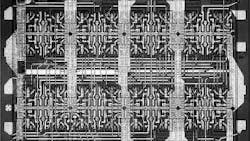U.S. space program helped introduce the notion of software to spacecraft flight control computer design
CAMBRIDGE, Mass. – During the development of the Apollo guidance computer (AGC) by the MIT Instrumentation Laboratory, an inauspicious event occurred sometime during 1965-1966, while the Gemini missions were going on. Universe Today reports. Continue reading original article
The Military & Aerospace Electronics take:
8 Oct. 2019 -- The Gemini program helped NASA get ready for the Apollo Moon landings missions by testing out rendezvous and other critical techniques and technologies. Ten crews flew missions in Earth orbit on the two-person Gemini spacecraft.
“IBM was doing the flight control system for the Gemini Program,” recalled Dick Battin, who led the design of the AGC for the Instrumentation Lab, “and they needed to make a program change in one of the programs for Gemini. IBM did a little calculation and told NASA, ‘It’ll cost you $1 million.’ In those days, that was a lot of money.”
George Mueller, NASA’s Associate Administrator for Manned Space Flight, was aghast. $1 million for something called ‘software?’
John Keller, chief editor
Military & Aerospace Electronics
